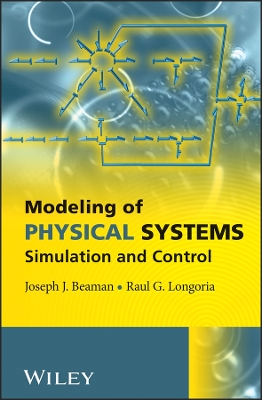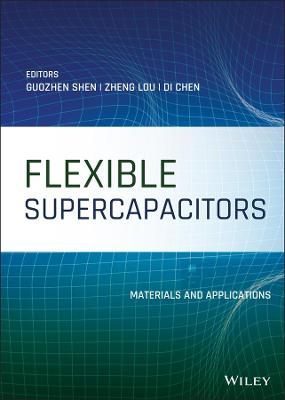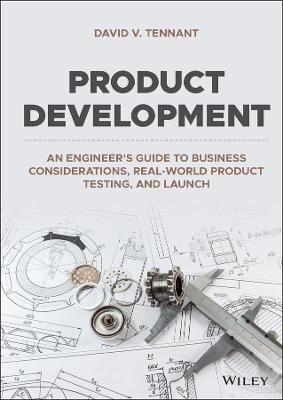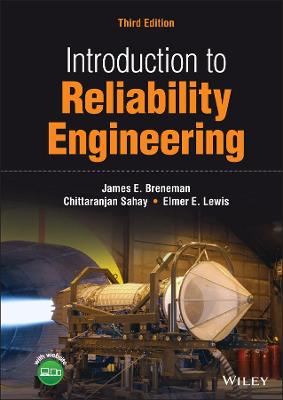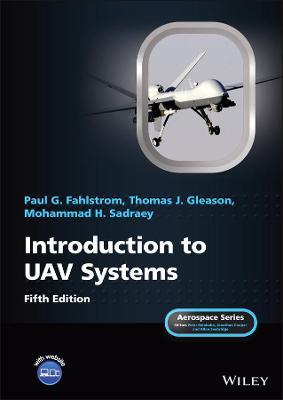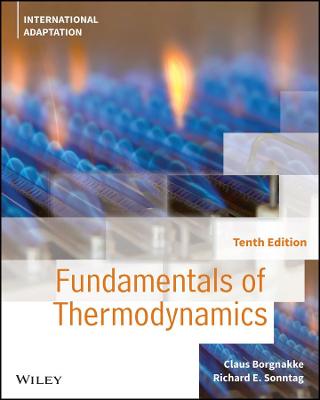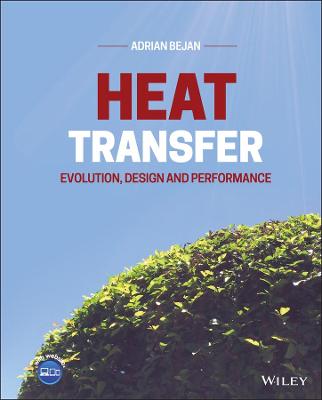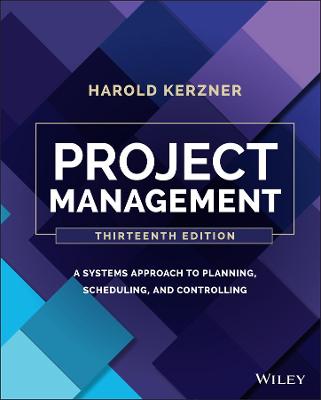Principles of Inorganic Materials Design
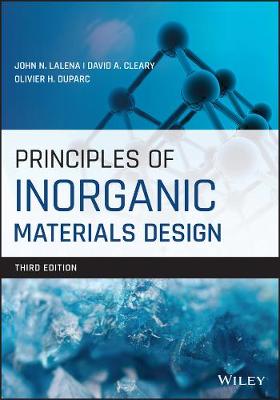 -15%
portes grátis
-15%
portes grátis
Principles of Inorganic Materials Design
Cleary, David A.; Lalena, John N.; B.M. Hardouin Duparc, Olivier
John Wiley & Sons Inc
07/2020
720
Dura
Inglês
9781119486831
15 a 20 dias
1334
Foreword to First Edition xv
Preface to Third Edition xix
Preface to Second Edition xx
Preface to First Edition xxi
Acronyms xxiii
1 Crystallographic Considerations 1
1.1 Degrees of Crystallinity 1
1.1.1 Monocrystalline Solids 2
1.1.2 Quasicrystalline Solids 3
1.1.3 Polycrystalline Solids 4
1.1.4 Semicrystalline Solids 5
1.1.5 Amorphous Solids 8
1.2 Basic Crystallography 8
1.2.1 Crystal Geometry 8
1.2.1.1 Types of Crystallographic Symmetry 12
1.2.1.2 Space Group Symmetry 17
1.2.1.3 Lattice Planes and Directions 27
1.3 Single-Crystal Morphology and Its Relationship to Lattice Symmetry 32
1.4 Twinned Crystals, Grain Boundaries, and Bicrystallography 37
1.4.1 Twinned Crystals and Twinning 37
1.4.2 Crystallographic Orientation Relationships in Bicrystals 39
1.4.2.1 The Coincidence Site Lattice 39
1.4.2.2 Equivalent Axis-Angle Pairs 44
1.5 Amorphous Solids and Glasses 46
1.5.1 Oxide Glasses 49
1.5.2 Metallic Glasses and Metal-Organic Framework Glasses 51
1.5.3 Aerogels 53
Practice Problems 53
References 55
2 Microstructural Considerations 57
2.1 Materials Length Scales 57
2.1.1 Experimental Resolution of Material Features 61
2.2 Grain Boundaries in Polycrystalline Materials 63
2.2.1 Grain Boundary Orientations 63
2.2.2 Dislocation Model of Low Angle Grain Boundaries 65
2.2.3 Grain Boundary Energy 66
2.2.4 Special Types of "Low-Energy" Boundaries 68
2.2.5 Grain Boundary Dynamics 69
2.2.6 Representing Orientation Distributions in Polycrystalline Aggregates 70
2.3 Materials Processing and Microstructure 72
2.3.1 Conventional Solidification 72
2.3.1.1 Grain Homogeneity 74
2.3.1.2 Grain Morphology 76
2.3.1.3 Zone Melting Techniques 78
2.3.2 Deformation Processing 79
2.3.3 Consolidation Processing 79
2.3.4 Thin-Film Formation 80
2.3.4.1 Epitaxy 81
2.3.4.2 Polycrystalline PVD Thin Films 81
2.3.4.3 Polycrystalline CVD Thin Films 83
2.4 Microstructure and Materials Properties 83
2.4.1 Mechanical Properties 83
2.4.2 Transport Properties 86
2.4.3 Magnetic and Dielectric Properties 90
2.4.4 Chemical Properties 92
2.5 Microstructure Control and Design 93
Practice Problems 96
References 96
3 Crystal Structures and Binding Forces 99
3.1 Structure Description Methods 99
3.1.1 Close Packing 99
3.1.2 Polyhedra 103
3.1.3 The (Primitive) Unit Cell 103
3.1.4 Space Groups and Wyckoff Positions 104
3.1.5 Strukturbericht Symbols 104
3.1.6 Pearson Symbols 105
3.2 Cohesive Forces in Solids 106
3.2.1 Ionic Bonding 106
3.2.2 Covalent Bonding 108
3.2.3 Dative Bonds 110
3.2.4 Metallic Bonding 111
3.2.5 Atoms and Bonds as Electron Charge Density 112
3.3 Chemical Potential Energy 113
3.3.1 Lattice Energy for Ionic Crystals 114
3.3.2 The Born-Haber Cycle 119
3.3.3 Goldschmidt's Rules and Pauling's Rules 120
3.3.4 Total Energy 122
3.3.5 Electronic Origin of Coordination Polyhedra in Covalent Crystals 124
3.4 Common Structure Types 127
3.4.1 Iono-covalent Solids 128
3.4.1.1 AX Compounds 128
3.4.1.2 AX2 Compounds 130
3.4.1.3 AX6 Compounds 132
3.4.1.4 ABX2 Compounds 132
3.4.1.5 AB2X4 Compounds (Spinel and Olivine Structures) 134
3.4.1.6 ABX3 Compounds (Perovskite and Related Phases) 135
3.4.1.7 A2B2O5(ABO2.5) Compounds (Oxygen-Deficient Perovskites) 137
3.4.1.8 AxByOz Compounds (Bronzes) 139
3.4.1.9 A2B2X7 Compounds (Pyrochlores) 139
3.4.1.10 Silicate Compounds 140
3.4.1.11 Porous Structures 141
3.4.2 Metal Carbides, Silicides, Borides, Hydrides, and Nitrides 144
3.4.3 Metallic Alloys and Intermetallic Compounds 144
3.4.3.1 Zintl Phases 147
3.4.3.2 Nonpolar Binary Intermetallic Phases 149
3.4.3.3 Ternary Intermetallic Phases 151
3.5 Structural Disturbances 153
3.5.1 Intrinsic Point Defects 154
3.5.2 Extrinsic Point Defects 155
3.5.3 Structural Distortions 156
3.5.4 Bond Valence Sum Calculations 158
3.6 Structure Control and Synthetic Strategies 162
Practice Problems 165
References 167
4 The Electronic Level I: An Overview of Band Theory 171
4.1 The Many-Body Schroedinger Equation and Hartree-Fock 171
4.2 Choice of Boundary Conditions: Born's Conditions 177
4.3 Free-Electron Model for Metals: From Drude (Classical) to Sommerfeld (Fermi-Dirac) 179
4.4 Bloch's Theorem, Bloch Waves, Energy Bands, and Fermi Energy 180
4.5 Reciprocal Space and Brillouin Zones 182
4.6 Choices of Basis Sets and Band Structure with Applicative Examples 188
4.6.1 From the Free-Electron Model to the Plane Wave Expansion 189
4.6.2 Fermi Surface, Brillouin Zone Boundaries, and Alkali Metals versus Copper 191
4.6.3 Understanding Metallic Phase Stability in Alloys 193
4.6.4 The Localized Orbital Basis Set Method 195
4.6.5 Understanding Band Structure Diagram with Rhenium Trioxide 196
4.6.6 Probing DOS Band Structure in Metallic Alloys 199
4.7 Breakdown of the Independent-Electron Approximation 200
4.8 Density Functional Theory: The Successor to the Hartree-Fock Approach in Materials Science 202
4.9 The Continuous Quest for Better DFT XC Functionals 205
4.10 Van der Waals Forces and DFT 208
Practice Problems 210
References 210
5 The Electronic Level II: The Tight-Binding Electronic Structure Approximation 213
5.1 The General LCAO Method 214
5.2 Extension of the LCAO Treatment to Crystalline Solids 219
5.3 Orbital Interactions in Monatomic Solids 221
5.3.1 ?-Bonding Interactions 221
5.3.2 ?-Bonding Interactions 225
5.4 Tight-Binding Assumptions 229
5.5 Qualitative LCAO Band Structures 232
5.5.1 Illustration 1: Transition Metal Oxides with Vertex-Sharing Octahedra 236
5.5.2 Illustration 2: Reduced Dimensional Systems 238
5.5.3 Illustration 3: Transition Metal Monoxides with Edge-Sharing Octahedra 240
5.5.4 Corollary 243
5.6 Total Energy Tight-Binding Calculations 244
Practice Problems 246
References 246
6 Transport Properties 249
6.1 An Introduction to Tensors 249
6.2 Microscopic Theory of Electrical Transport in Ceramics: The Role of Point Defects 254
6.2.1 Oxygen-Deficient/Metal Excess and Metal-Deficient/Oxygen Excess Oxides 256
6.2.2 Substitutions by Aliovalent Cations with Valence Isoelectronicity 261
6.2.3 Substitutions by Isovalent Cations That are Not Valence Isoelectronic 263
6.2.4 Nitrogen Vacancies in Nitrides 266
6.3 Thermal Conductivity 268
6.3.1 The Free Electron Contribution 269
6.3.2 The Phonon Contribution 271
6.4 Electrical Conductivity 274
6.4.1 Band Structure Considerations 278
6.4.1.1 Conductors 278
6.4.1.2 Insulators 279
6.4.1.3 Semiconductors 281
6.4.1.4 Semimetals 290
6.4.2 Thermoelectric, Photovoltaic, and Magnetotransport Properties 292
6.4.2.1 Thermoelectrics 292
6.4.2.2 Photovoltaics 298
6.4.2.3 Galvanomagnetic Effects and Magnetotransport Properties 301
6.4.3 Superconductors 303
6.4.4 Improving Bulk Electrical Conduction in Polycrystalline, Multiphasic, and Composite Materials 307
6.5 Mass Transport 308
6.5.1 Atomic Diffusion 309
6.5.2 Ionic Conduction 316
Practice Problems 321
References 322
7 Hopping Conduction and Metal-Insulator Transitions 325
7.1 Correlated Systems 327
7.1.1 The Mott-Hubbard Insulating State 329
7.1.2 Charge-Transfer Insulators 334
7.1.3 Marginal Metals 334
7.2 Anderson Localization 336
7.3 Experimentally Distinguishing Disorder from Electron Correlation 340
7.4 Tuning the M-I Transition 343
7.5 Other Types of Electronic Transitions 345
Practice Problems 347
References 347
8 Magnetic and Dielectric Properties 349
8.1 Phenomenological Description of Magnetic Behavior 351
8.1.1 Magnetization Curves 354
8.1.2 Susceptibility Curves 355
8.2 Atomic States and Term Symbols of Free Ions 359
8.3 Atomic Origin of Paramagnetism 365
8.3.1 Orbital Angular Momentum Contribution: The Free Ion Case 366
8.3.2 Spin Angular Momentum Contribution: The Free Ion Case 367
8.3.3 Total Magnetic Moment: The Free Ion Case 368
8.3.4 Spin-Orbit Coupling: The Free Ion Case 368
8.3.5 Single Ions in Crystals 371
8.3.5.1 Orbital Momentum Quenching 371
8.3.5.2 Spin Momentum Quenching 373
8.3.5.3 The Effect of JT Distortions 373
8.3.6 Solids 374
8.4 Diamagnetism 376
8.5 Spontaneous Magnetic Ordering 377
8.5.1 Exchange Interactions 379
8.5.1.1 Direct Exchange and Superexchange Interactions in Magnetic Insulators 382
8.5.1.2 Indirect Exchange Interactions 387
8.5.2 Itinerant Ferromagnetism 390
8.5.3 Noncollinear Spin Configurations and Magnetocrystalline Anisotropy 394
8.5.3.1 Geometric Frustration 394
8.5.3.2 Magnetic Anisotropy 397
8.5.3.3 Magnetic Domains 398
8.5.4 Ferromagnetic Properties of Amorphous Metals 401
8.6 Magnetotransport Properties 401
8.6.1 The Double Exchange Mechanism 402
8.6.2 The Half-Metallic Ferromagnet Model 403
8.7 Magnetostriction 404
8.8 Dielectric Properties 405
8.8.1 The Microscopic Equations 407
8.8.2 Piezoelectricity 408
8.8.3 Pyroelectricity 414
8.8.4 Ferroelectricity 416
Practice Problems 421
References 422
9 Optical Properties of Materials 425
9.1 Maxwell's Equations 425
9.2 Refractive Index 428
9.3 Absorption 436
9.4 Nonlinear Effects 441
9.5 Summary 446
Practice Problems 446
References 447
10 Mechanical Properties 449
10.1 Stress and Strain 449
10.2 Elasticity 452
10.2.1 The Elasticity Tensors 455
10.2.2 Elastically Isotropic and Anisotropic Solids 459
10.2.3 The Relation Between Elasticity and the Cohesive Forces in a Solid 465
10.2.3.1 Bulk Modulus 466
10.2.3.2 Rigidity (Shear) Modulus 467
10.2.3.3 Young's Modulus 470
10.2.4 Superelasticity, Pseudoelasticity, and the Shape Memory Effect 473
10.3 Plasticity 475
10.3.1 The Dislocation-Based Mechanism to Plastic Deformation 481
10.3.2 Polycrystalline Metals 487
10.3.3 Brittle and Semi-brittle Solids 489
10.3.4 The Correlation Between the Electronic Structure and the Plasticity of Materials 490
10.4 Fracture 491
Practice Problems 494
References 495
11 Phase Equilibria, Phase Diagrams, and Phase Modeling 499
11.1 Thermodynamic Systems and Equilibrium 500
11.1.1 Equilibrium Thermodynamics 504
11.2 Thermodynamic Potentials and the Laws 507
11.3 Understanding Phase Diagrams 510
11.3.1 Unary Systems 510
11.3.2 Binary Systems 511
11.3.3 Ternary Systems 518
11.3.4 Metastable Equilibria 522
11.4 Experimental Phase Diagram Determinations 522
11.5 Phase Diagram Modeling 523
11.5.1 Gibbs Energy Expressions for Mixtures and Solid Solutions 524
11.5.2 Gibbs Energy Expressions for Phases with Long-Range Order 527
11.5.3 Other Contributions to the Gibbs Energy 530
11.5.4 Phase Diagram Extrapolations: The CALPHAD Method 531
Practice Problems 534
References 535
12 Synthetic Strategies 537
12.1 Synthetic Strategies 538
12.1.1 Direct Combination 538
12.1.2 Low Temperature 540
12.1.2.1 Sol-Gel 540
12.1.2.2 Solvothermal 543
12.1.2.3 Intercalation 544
12.1.3 Defects 546
12.1.4 Combinatorial Synthesis 548
12.1.5 Spinodal Decomposition 548
12.1.6 Thin Films 550
12.1.7 Photonic Materials 552
12.1.8 Nanosynthesis 553
12.1.8.1 Liquid Phase Techniques 554
12.1.8.2 Vapor/Aerosol Methods 556
12.1.8.3 Combined Strategies 556
12.2 Summary 558
Practice Problems 559
References 559
13 An Introduction to Nanomaterials 563
13.1 History of Nanotechnology 564
13.2 Nanomaterials Properties 565
13.2.1 Electrical Properties 566
13.2.2 Magnetic Properties 567
13.2.3 Optical Properties 567
13.2.4 Thermal Properties 568
13.2.5 Mechanical Properties 569
13.2.6 Chemical Reactivity 570
13.3 More on Nanomaterials Preparative Techniques 572
13.3.1 Top-Down Methods for the Fabrication of Nanocrystalline Materials 572
13.3.1.1 Nanostructured Thin Films 572
13.3.1.2 Nanocrystalline Bulk Phases 573
13.3.2 Bottom-Up Methods for the Synthesis of Nanostructured Solids 574
13.3.2.1 Precipitation 575
13.3.2.2 Hydrothermal Techniques 576
13.3.2.3 Micelle-Assisted Routes 577
13.3.2.4 Thermolysis, Photolysis, and Sonolysis 580
13.3.2.5 Sol-Gel Methods 581
13.3.2.6 Polyol Method 582
13.3.2.7 High-Temperature Organic Polyol Reactions (IBM Nanoparticle Synthesis) 584
13.3.2.8 Additive Manufacturing (3D Printing) 584
References 586
14 Introduction to Computational Materials Science 589
14.1 A Short History of Computational Materials Science 590
14.1.1 1945-1965: The Dawn of Computational Materials Science 591
14.1.2 1965-2000: Steady Progress Through Continued Advances in Hardware and Software 595
14.1.3 2000-Present: High-Performance and Cloud Computing 598
14.2 Spatial and Temporal Scales, Computational Expense, and Reliability of Solid-State Calculations 600
14.3 Illustrative Examples 604
14.3.1 Exploration of the Local Atomic Structure in Multi-principal Element Alloys by Quantum Molecular Dynamics 604
14.3.2 Magnetic Properties of a Series of Double Perovskite Oxides A2BCO6 (A = Sr, Ca; B = Cr; C = Mo, Re, W) by Monte Carlo Simulations in the Framework of the Ising Model 606
14.3.3 Crystal Plasticity Finite Element Method (CPFEM) Analysis for Modeling Plasticity in Polycrystalline Alloys 613
References 617
15 Case Study I: TiO2 619
15.1 Crystallography 619
15.2 Microstructure 623
15.3 Bonding 626
15.4 Electronic Structure 627
15.5 Transport 628
15.6 Metal-Insulator Transitions 632
15.7 Magnetic and Dielectric Properties 632
15.8 Optical Properties 634
15.9 Mechanical Properties 635
15.10 Phase Equilibria 636
15.11 Synthesis 638
15.12 Nanomaterial 639
Practice Questions 639
References 640
16 Case Study II: GaN 643
16.1 Crystallography 643
16.2 Microstructure 646
16.3 Bonding 647
16.4 Electronic Structure 647
16.5 Transport 648
16.6 Metal-Insulator Transitions 650
16.7 Magnetic and Dielectric Properties 652
16.8 Optical Properties 652
16.9 Mechanical Properties 653
16.10 Phase Equilibria 654
16.11 Synthesis 654
16.12 Nanomaterial 656
Practice Questions 657
References 658
Appendix A: List of the 230 Space Groups 659
Appendix B: The 32 Crystal Systems and the 47 Possible Forms 665
Appendix C: Principles of Tensors 667
Appendix D: Solutions to Practice Problems 679
Index 683
Foreword to First Edition xv
Preface to Third Edition xix
Preface to Second Edition xx
Preface to First Edition xxi
Acronyms xxiii
1 Crystallographic Considerations 1
1.1 Degrees of Crystallinity 1
1.1.1 Monocrystalline Solids 2
1.1.2 Quasicrystalline Solids 3
1.1.3 Polycrystalline Solids 4
1.1.4 Semicrystalline Solids 5
1.1.5 Amorphous Solids 8
1.2 Basic Crystallography 8
1.2.1 Crystal Geometry 8
1.2.1.1 Types of Crystallographic Symmetry 12
1.2.1.2 Space Group Symmetry 17
1.2.1.3 Lattice Planes and Directions 27
1.3 Single-Crystal Morphology and Its Relationship to Lattice Symmetry 32
1.4 Twinned Crystals, Grain Boundaries, and Bicrystallography 37
1.4.1 Twinned Crystals and Twinning 37
1.4.2 Crystallographic Orientation Relationships in Bicrystals 39
1.4.2.1 The Coincidence Site Lattice 39
1.4.2.2 Equivalent Axis-Angle Pairs 44
1.5 Amorphous Solids and Glasses 46
1.5.1 Oxide Glasses 49
1.5.2 Metallic Glasses and Metal-Organic Framework Glasses 51
1.5.3 Aerogels 53
Practice Problems 53
References 55
2 Microstructural Considerations 57
2.1 Materials Length Scales 57
2.1.1 Experimental Resolution of Material Features 61
2.2 Grain Boundaries in Polycrystalline Materials 63
2.2.1 Grain Boundary Orientations 63
2.2.2 Dislocation Model of Low Angle Grain Boundaries 65
2.2.3 Grain Boundary Energy 66
2.2.4 Special Types of "Low-Energy" Boundaries 68
2.2.5 Grain Boundary Dynamics 69
2.2.6 Representing Orientation Distributions in Polycrystalline Aggregates 70
2.3 Materials Processing and Microstructure 72
2.3.1 Conventional Solidification 72
2.3.1.1 Grain Homogeneity 74
2.3.1.2 Grain Morphology 76
2.3.1.3 Zone Melting Techniques 78
2.3.2 Deformation Processing 79
2.3.3 Consolidation Processing 79
2.3.4 Thin-Film Formation 80
2.3.4.1 Epitaxy 81
2.3.4.2 Polycrystalline PVD Thin Films 81
2.3.4.3 Polycrystalline CVD Thin Films 83
2.4 Microstructure and Materials Properties 83
2.4.1 Mechanical Properties 83
2.4.2 Transport Properties 86
2.4.3 Magnetic and Dielectric Properties 90
2.4.4 Chemical Properties 92
2.5 Microstructure Control and Design 93
Practice Problems 96
References 96
3 Crystal Structures and Binding Forces 99
3.1 Structure Description Methods 99
3.1.1 Close Packing 99
3.1.2 Polyhedra 103
3.1.3 The (Primitive) Unit Cell 103
3.1.4 Space Groups and Wyckoff Positions 104
3.1.5 Strukturbericht Symbols 104
3.1.6 Pearson Symbols 105
3.2 Cohesive Forces in Solids 106
3.2.1 Ionic Bonding 106
3.2.2 Covalent Bonding 108
3.2.3 Dative Bonds 110
3.2.4 Metallic Bonding 111
3.2.5 Atoms and Bonds as Electron Charge Density 112
3.3 Chemical Potential Energy 113
3.3.1 Lattice Energy for Ionic Crystals 114
3.3.2 The Born-Haber Cycle 119
3.3.3 Goldschmidt's Rules and Pauling's Rules 120
3.3.4 Total Energy 122
3.3.5 Electronic Origin of Coordination Polyhedra in Covalent Crystals 124
3.4 Common Structure Types 127
3.4.1 Iono-covalent Solids 128
3.4.1.1 AX Compounds 128
3.4.1.2 AX2 Compounds 130
3.4.1.3 AX6 Compounds 132
3.4.1.4 ABX2 Compounds 132
3.4.1.5 AB2X4 Compounds (Spinel and Olivine Structures) 134
3.4.1.6 ABX3 Compounds (Perovskite and Related Phases) 135
3.4.1.7 A2B2O5(ABO2.5) Compounds (Oxygen-Deficient Perovskites) 137
3.4.1.8 AxByOz Compounds (Bronzes) 139
3.4.1.9 A2B2X7 Compounds (Pyrochlores) 139
3.4.1.10 Silicate Compounds 140
3.4.1.11 Porous Structures 141
3.4.2 Metal Carbides, Silicides, Borides, Hydrides, and Nitrides 144
3.4.3 Metallic Alloys and Intermetallic Compounds 144
3.4.3.1 Zintl Phases 147
3.4.3.2 Nonpolar Binary Intermetallic Phases 149
3.4.3.3 Ternary Intermetallic Phases 151
3.5 Structural Disturbances 153
3.5.1 Intrinsic Point Defects 154
3.5.2 Extrinsic Point Defects 155
3.5.3 Structural Distortions 156
3.5.4 Bond Valence Sum Calculations 158
3.6 Structure Control and Synthetic Strategies 162
Practice Problems 165
References 167
4 The Electronic Level I: An Overview of Band Theory 171
4.1 The Many-Body Schroedinger Equation and Hartree-Fock 171
4.2 Choice of Boundary Conditions: Born's Conditions 177
4.3 Free-Electron Model for Metals: From Drude (Classical) to Sommerfeld (Fermi-Dirac) 179
4.4 Bloch's Theorem, Bloch Waves, Energy Bands, and Fermi Energy 180
4.5 Reciprocal Space and Brillouin Zones 182
4.6 Choices of Basis Sets and Band Structure with Applicative Examples 188
4.6.1 From the Free-Electron Model to the Plane Wave Expansion 189
4.6.2 Fermi Surface, Brillouin Zone Boundaries, and Alkali Metals versus Copper 191
4.6.3 Understanding Metallic Phase Stability in Alloys 193
4.6.4 The Localized Orbital Basis Set Method 195
4.6.5 Understanding Band Structure Diagram with Rhenium Trioxide 196
4.6.6 Probing DOS Band Structure in Metallic Alloys 199
4.7 Breakdown of the Independent-Electron Approximation 200
4.8 Density Functional Theory: The Successor to the Hartree-Fock Approach in Materials Science 202
4.9 The Continuous Quest for Better DFT XC Functionals 205
4.10 Van der Waals Forces and DFT 208
Practice Problems 210
References 210
5 The Electronic Level II: The Tight-Binding Electronic Structure Approximation 213
5.1 The General LCAO Method 214
5.2 Extension of the LCAO Treatment to Crystalline Solids 219
5.3 Orbital Interactions in Monatomic Solids 221
5.3.1 ?-Bonding Interactions 221
5.3.2 ?-Bonding Interactions 225
5.4 Tight-Binding Assumptions 229
5.5 Qualitative LCAO Band Structures 232
5.5.1 Illustration 1: Transition Metal Oxides with Vertex-Sharing Octahedra 236
5.5.2 Illustration 2: Reduced Dimensional Systems 238
5.5.3 Illustration 3: Transition Metal Monoxides with Edge-Sharing Octahedra 240
5.5.4 Corollary 243
5.6 Total Energy Tight-Binding Calculations 244
Practice Problems 246
References 246
6 Transport Properties 249
6.1 An Introduction to Tensors 249
6.2 Microscopic Theory of Electrical Transport in Ceramics: The Role of Point Defects 254
6.2.1 Oxygen-Deficient/Metal Excess and Metal-Deficient/Oxygen Excess Oxides 256
6.2.2 Substitutions by Aliovalent Cations with Valence Isoelectronicity 261
6.2.3 Substitutions by Isovalent Cations That are Not Valence Isoelectronic 263
6.2.4 Nitrogen Vacancies in Nitrides 266
6.3 Thermal Conductivity 268
6.3.1 The Free Electron Contribution 269
6.3.2 The Phonon Contribution 271
6.4 Electrical Conductivity 274
6.4.1 Band Structure Considerations 278
6.4.1.1 Conductors 278
6.4.1.2 Insulators 279
6.4.1.3 Semiconductors 281
6.4.1.4 Semimetals 290
6.4.2 Thermoelectric, Photovoltaic, and Magnetotransport Properties 292
6.4.2.1 Thermoelectrics 292
6.4.2.2 Photovoltaics 298
6.4.2.3 Galvanomagnetic Effects and Magnetotransport Properties 301
6.4.3 Superconductors 303
6.4.4 Improving Bulk Electrical Conduction in Polycrystalline, Multiphasic, and Composite Materials 307
6.5 Mass Transport 308
6.5.1 Atomic Diffusion 309
6.5.2 Ionic Conduction 316
Practice Problems 321
References 322
7 Hopping Conduction and Metal-Insulator Transitions 325
7.1 Correlated Systems 327
7.1.1 The Mott-Hubbard Insulating State 329
7.1.2 Charge-Transfer Insulators 334
7.1.3 Marginal Metals 334
7.2 Anderson Localization 336
7.3 Experimentally Distinguishing Disorder from Electron Correlation 340
7.4 Tuning the M-I Transition 343
7.5 Other Types of Electronic Transitions 345
Practice Problems 347
References 347
8 Magnetic and Dielectric Properties 349
8.1 Phenomenological Description of Magnetic Behavior 351
8.1.1 Magnetization Curves 354
8.1.2 Susceptibility Curves 355
8.2 Atomic States and Term Symbols of Free Ions 359
8.3 Atomic Origin of Paramagnetism 365
8.3.1 Orbital Angular Momentum Contribution: The Free Ion Case 366
8.3.2 Spin Angular Momentum Contribution: The Free Ion Case 367
8.3.3 Total Magnetic Moment: The Free Ion Case 368
8.3.4 Spin-Orbit Coupling: The Free Ion Case 368
8.3.5 Single Ions in Crystals 371
8.3.5.1 Orbital Momentum Quenching 371
8.3.5.2 Spin Momentum Quenching 373
8.3.5.3 The Effect of JT Distortions 373
8.3.6 Solids 374
8.4 Diamagnetism 376
8.5 Spontaneous Magnetic Ordering 377
8.5.1 Exchange Interactions 379
8.5.1.1 Direct Exchange and Superexchange Interactions in Magnetic Insulators 382
8.5.1.2 Indirect Exchange Interactions 387
8.5.2 Itinerant Ferromagnetism 390
8.5.3 Noncollinear Spin Configurations and Magnetocrystalline Anisotropy 394
8.5.3.1 Geometric Frustration 394
8.5.3.2 Magnetic Anisotropy 397
8.5.3.3 Magnetic Domains 398
8.5.4 Ferromagnetic Properties of Amorphous Metals 401
8.6 Magnetotransport Properties 401
8.6.1 The Double Exchange Mechanism 402
8.6.2 The Half-Metallic Ferromagnet Model 403
8.7 Magnetostriction 404
8.8 Dielectric Properties 405
8.8.1 The Microscopic Equations 407
8.8.2 Piezoelectricity 408
8.8.3 Pyroelectricity 414
8.8.4 Ferroelectricity 416
Practice Problems 421
References 422
9 Optical Properties of Materials 425
9.1 Maxwell's Equations 425
9.2 Refractive Index 428
9.3 Absorption 436
9.4 Nonlinear Effects 441
9.5 Summary 446
Practice Problems 446
References 447
10 Mechanical Properties 449
10.1 Stress and Strain 449
10.2 Elasticity 452
10.2.1 The Elasticity Tensors 455
10.2.2 Elastically Isotropic and Anisotropic Solids 459
10.2.3 The Relation Between Elasticity and the Cohesive Forces in a Solid 465
10.2.3.1 Bulk Modulus 466
10.2.3.2 Rigidity (Shear) Modulus 467
10.2.3.3 Young's Modulus 470
10.2.4 Superelasticity, Pseudoelasticity, and the Shape Memory Effect 473
10.3 Plasticity 475
10.3.1 The Dislocation-Based Mechanism to Plastic Deformation 481
10.3.2 Polycrystalline Metals 487
10.3.3 Brittle and Semi-brittle Solids 489
10.3.4 The Correlation Between the Electronic Structure and the Plasticity of Materials 490
10.4 Fracture 491
Practice Problems 494
References 495
11 Phase Equilibria, Phase Diagrams, and Phase Modeling 499
11.1 Thermodynamic Systems and Equilibrium 500
11.1.1 Equilibrium Thermodynamics 504
11.2 Thermodynamic Potentials and the Laws 507
11.3 Understanding Phase Diagrams 510
11.3.1 Unary Systems 510
11.3.2 Binary Systems 511
11.3.3 Ternary Systems 518
11.3.4 Metastable Equilibria 522
11.4 Experimental Phase Diagram Determinations 522
11.5 Phase Diagram Modeling 523
11.5.1 Gibbs Energy Expressions for Mixtures and Solid Solutions 524
11.5.2 Gibbs Energy Expressions for Phases with Long-Range Order 527
11.5.3 Other Contributions to the Gibbs Energy 530
11.5.4 Phase Diagram Extrapolations: The CALPHAD Method 531
Practice Problems 534
References 535
12 Synthetic Strategies 537
12.1 Synthetic Strategies 538
12.1.1 Direct Combination 538
12.1.2 Low Temperature 540
12.1.2.1 Sol-Gel 540
12.1.2.2 Solvothermal 543
12.1.2.3 Intercalation 544
12.1.3 Defects 546
12.1.4 Combinatorial Synthesis 548
12.1.5 Spinodal Decomposition 548
12.1.6 Thin Films 550
12.1.7 Photonic Materials 552
12.1.8 Nanosynthesis 553
12.1.8.1 Liquid Phase Techniques 554
12.1.8.2 Vapor/Aerosol Methods 556
12.1.8.3 Combined Strategies 556
12.2 Summary 558
Practice Problems 559
References 559
13 An Introduction to Nanomaterials 563
13.1 History of Nanotechnology 564
13.2 Nanomaterials Properties 565
13.2.1 Electrical Properties 566
13.2.2 Magnetic Properties 567
13.2.3 Optical Properties 567
13.2.4 Thermal Properties 568
13.2.5 Mechanical Properties 569
13.2.6 Chemical Reactivity 570
13.3 More on Nanomaterials Preparative Techniques 572
13.3.1 Top-Down Methods for the Fabrication of Nanocrystalline Materials 572
13.3.1.1 Nanostructured Thin Films 572
13.3.1.2 Nanocrystalline Bulk Phases 573
13.3.2 Bottom-Up Methods for the Synthesis of Nanostructured Solids 574
13.3.2.1 Precipitation 575
13.3.2.2 Hydrothermal Techniques 576
13.3.2.3 Micelle-Assisted Routes 577
13.3.2.4 Thermolysis, Photolysis, and Sonolysis 580
13.3.2.5 Sol-Gel Methods 581
13.3.2.6 Polyol Method 582
13.3.2.7 High-Temperature Organic Polyol Reactions (IBM Nanoparticle Synthesis) 584
13.3.2.8 Additive Manufacturing (3D Printing) 584
References 586
14 Introduction to Computational Materials Science 589
14.1 A Short History of Computational Materials Science 590
14.1.1 1945-1965: The Dawn of Computational Materials Science 591
14.1.2 1965-2000: Steady Progress Through Continued Advances in Hardware and Software 595
14.1.3 2000-Present: High-Performance and Cloud Computing 598
14.2 Spatial and Temporal Scales, Computational Expense, and Reliability of Solid-State Calculations 600
14.3 Illustrative Examples 604
14.3.1 Exploration of the Local Atomic Structure in Multi-principal Element Alloys by Quantum Molecular Dynamics 604
14.3.2 Magnetic Properties of a Series of Double Perovskite Oxides A2BCO6 (A = Sr, Ca; B = Cr; C = Mo, Re, W) by Monte Carlo Simulations in the Framework of the Ising Model 606
14.3.3 Crystal Plasticity Finite Element Method (CPFEM) Analysis for Modeling Plasticity in Polycrystalline Alloys 613
References 617
15 Case Study I: TiO2 619
15.1 Crystallography 619
15.2 Microstructure 623
15.3 Bonding 626
15.4 Electronic Structure 627
15.5 Transport 628
15.6 Metal-Insulator Transitions 632
15.7 Magnetic and Dielectric Properties 632
15.8 Optical Properties 634
15.9 Mechanical Properties 635
15.10 Phase Equilibria 636
15.11 Synthesis 638
15.12 Nanomaterial 639
Practice Questions 639
References 640
16 Case Study II: GaN 643
16.1 Crystallography 643
16.2 Microstructure 646
16.3 Bonding 647
16.4 Electronic Structure 647
16.5 Transport 648
16.6 Metal-Insulator Transitions 650
16.7 Magnetic and Dielectric Properties 652
16.8 Optical Properties 652
16.9 Mechanical Properties 653
16.10 Phase Equilibria 654
16.11 Synthesis 654
16.12 Nanomaterial 656
Practice Questions 657
References 658
Appendix A: List of the 230 Space Groups 659
Appendix B: The 32 Crystal Systems and the 47 Possible Forms 665
Appendix C: Principles of Tensors 667
Appendix D: Solutions to Practice Problems 679
Index 683



